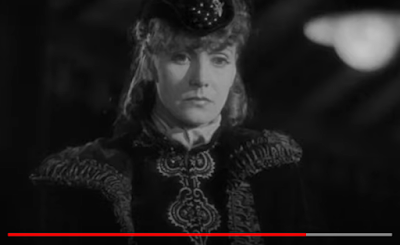Combination of spoiler alert and content warning: though we don't see it, a character in this 11935 movie takes her own life.
It's not usual in writing about a film to go to the ending first, but anticipation of tragedy of Tolstoy's novel Anna Karenina hangs over us as viewers of the film version. I decided it was best to examine the ending of this Greta Garbo film and then in Part 2 work backwards to make the rest of the film a prequel to the tragic moment at the end.
"Anna Karenina" is a sad movie but it's also a good one. I think it's one of Garbo's best. The movie's been remade a number of times, but one critic has called the 1935 version 'the most subtle" and I agree. Garbo entered the world of acting when both theatre and film were heavily influenced by German Expressionism, so her performance seems more actress-y than we are used to in modern film, when cast members in dramas are directed to present as ultra-realistic.
Yet it's Garbo background years in silent films when facial expressions did the work that spoken dialogue would later do. Greta Garbo, in "Anna Karenina," telegraphs every feeling which passes through her, and we see complex layers of understanding, emotion, and reaction. In this post, I've grabbed a series of stills from the train depot scene at the end of the movie so you can see what I mean. At the end of the post, I've included the full clip so after seeing the stills you watch the scene unfold.
She's spotted him, but he's not alone. He's flirting with a younger woman, and it's obvious that his former flaming passion for Anna is now a thing of the past.
Now that you've seen this part of the story in a few screen captures, here it is as it was shown in movie theaters in 1935.
Note: This is the second time Greta Garbo played this Tolstoy character; there was a silent version given the title "Love" to capitalize on the Hollywood-built romance between Greta Garbo and John Gilbert.
Next week: Part 2 -- How did Anna get into this awful situation?
 |
| Garbo |

























No comments:
Post a Comment